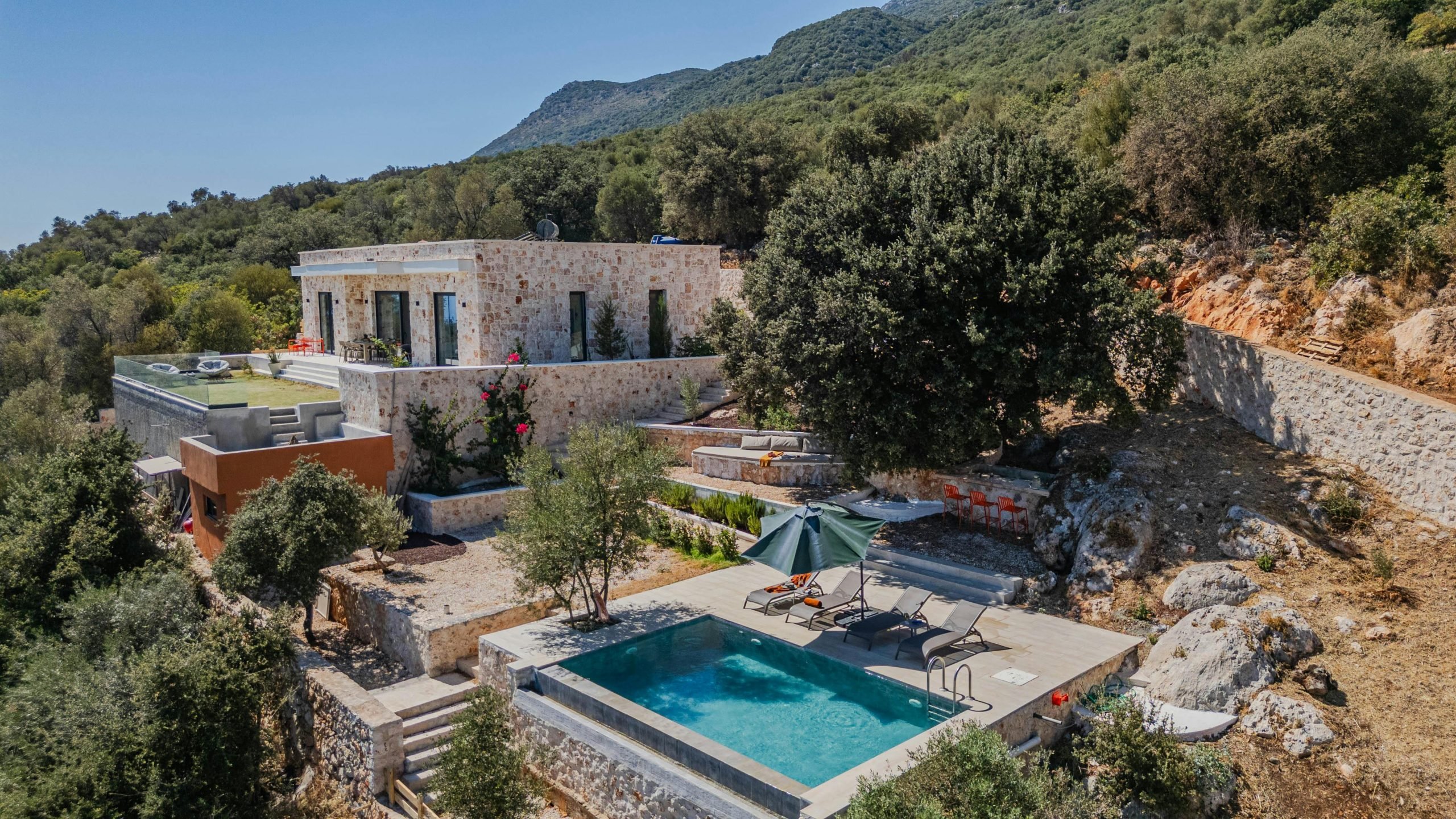The Peloponnese is not separate from mainland Greece – it is connected via the narrow Isthmus of Corinth, making it technically part of the mainland despite its peninsula-like appearance. This 6-kilometre-wide land bridge has made the region highly accessible for centuries, contributing significantly to its appeal for property investment and tourism development.
Understanding Peloponnese’s unique geographic position in Greece
The Peloponnese occupies a distinctive position as Greece’s largest peninsula, forming the southernmost part of the Greek mainland. This strategic location has shaped its historical importance and continues to influence its modern appeal for international property buyers.
Historically known as the Morea, the Peloponnese has been central to Greek civilisation for millennia. Ancient Sparta, Olympia, and Corinth all flourished here, benefiting from the region’s natural harbours and fertile valleys. Today, this rich heritage combines with stunning coastlines and mountainous interiors to create one of Greece’s most sought-after regions for holiday homes and investment properties.
The peninsula’s geography offers remarkable diversity within a relatively compact area. Investors can choose between coastal properties along the Ionian or Aegean seas, mountain retreats in the Taygetus range, or historic towns steeped in classical antiquity. This variety, coupled with excellent connectivity to Athens and international airports, makes the Peloponnese particularly attractive for those seeking Peloponnese property opportunities.
Is Peloponnese actually separate from mainland Greece?
The Peloponnese is definitively part of mainland Greece, connected by the Isthmus of Corinth. This narrow strip of land, measuring just 6 kilometres at its narrowest point, forms a natural bridge between the peninsula and central Greece.
The confusion often arises because the Peloponnese appears island-like on maps and is surrounded by water on three sides. The Ionian Sea borders its western coast, the Mediterranean Sea lies to the south, and the Aegean Sea washes its eastern shores. However, the crucial northern connection via the Isthmus of Corinth maintains its status as part of the mainland.
This geographic technicality has practical implications for property buyers and travellers. Unlike Greece’s numerous islands, which require ferry connections or flights, the Peloponnese remains accessible by road and rail directly from Athens and other mainland destinations. This connectivity has historically made the region more economically integrated with central Greece whilst maintaining its distinct cultural identity.
How is Peloponnese connected to the rest of Greece?
The Peloponnese connects to mainland Greece through several transportation corridors that cross the Isthmus of Corinth. The most significant infrastructure includes the Corinth Canal, modern motorway bridges, and railway connections.
The famous Corinth Canal, completed in 1893, cuts through the isthmus to create a shipping shortcut between the Aegean and Ionian seas. Whilst primarily serving maritime traffic, the canal is spanned by several bridges that maintain land connections. The most important for modern travel is the A8 motorway bridge, part of the Olympia Odos highway system.
Road connections include the A8 motorway linking Athens directly to Patras, and the A7 providing access to southern destinations like Kalamata. The railway network also crosses the isthmus, connecting Peloponnese cities to Athens and Thessaloniki. These multiple connection points ensure redundancy and reliability for both residents and visitors.
Additionally, the Rio-Antirrio Bridge spans the Gulf of Corinth, providing an alternative northern route that connects the western Peloponnese to central Greece. This impressive cable-stayed bridge, completed in 2004, offers spectacular views and reduces travel times significantly.
What is the driving distance from Athens to major Peloponnese cities?
Athens sits approximately 80-250 kilometres from major Peloponnese destinations, with driving times ranging from 1.5 to 4 hours depending on the specific location and route chosen.
| Destination | Distance from Athens | Approximate Driving Time | Primary Route |
|---|---|---|---|
| Corinth | 84 km | 1 hour 15 minutes | A8 Motorway |
| Nafplio | 145 km | 1 hour 45 minutes | A8 then A7 |
| Patras | 215 km | 2 hours 30 minutes | A8 Motorway |
| Kalamata | 240 km | 2 hours 45 minutes | A7 Motorway |
| Sparta | 250 km | 3 hours | A7 then regional roads |
These distances make the Peloponnese highly accessible for property viewing trips from Athens. International buyers can easily visit multiple locations within a single journey, comparing coastal properties in Nafplio with mountain retreats near Sparta, or exploring investment opportunities in both Patras and Kalamata during one visit.
The excellent motorway network means journey times are predictable and comfortable, with modern service areas and scenic rest stops along the routes. This accessibility factor significantly enhances the region’s appeal for both permanent residence and holiday home ownership.
Why does Peloponnese’s location matter for property investment?
The Peloponnese’s strategic position creates several investment advantages that directly impact property values, rental potential, and long-term appreciation prospects.
Proximity to Athens ensures strong domestic demand for weekend and holiday properties. Greek families frequently purchase second homes within easy driving distance of the capital, creating a stable local market that complements international buyer interest. This dual demand supports property values and provides rental opportunities throughout the year.
The region’s accessibility attracts diverse tourism markets. Visitors can arrive via Athens International Airport and reach most Peloponnese destinations within three hours. This convenience factor makes rental properties more attractive to international tourists who prefer driving to ferry connections required for island properties.
Infrastructure development continues to enhance the region’s investment appeal. Improved motorways, upgraded airports in Kalamata and Araxos, and enhanced port facilities all contribute to increasing property accessibility and desirability. These improvements typically precede property value appreciation, making current investments potentially well-positioned for future growth.
The Peloponnese also offers geographic diversification within a single region. Investors can choose between established markets like Nafplio, emerging destinations like Costa Navarino, or traditional towns with development potential. This variety allows portfolio diversification whilst maintaining the operational simplicity of investing within one connected region.
How accessible is Peloponnese for international property buyers?
International property buyers find the Peloponnese remarkably accessible through multiple transportation options that cater to different preferences and budgets.
Athens International Airport serves as the primary gateway, offering direct flights from major European cities, North America, and other international destinations. From Athens, buyers can rent cars for property viewing trips or use public transportation to reach their destinations. The airport’s proximity to motorway connections means most Peloponnese locations are reachable within three hours.
Kalamata International Airport provides direct access to the southern Peloponnese, with seasonal flights from various European cities. This airport particularly benefits buyers interested in properties around Kalamata, the Mani Peninsula, or Costa Navarino area. During peak season, charter flights and scheduled services offer convenient alternatives to Athens connections.
Ferry connections link the Peloponnese to Italy and other Mediterranean destinations. Patras serves as a major ferry port with regular services to Italy, making it possible for buyers to combine property visits with broader European travel. These connections also appeal to buyers who prefer overland travel or wish to transport vehicles.
The region’s excellent road network accommodates international driving licences and rental cars, providing flexibility for property viewing itineraries. Modern motorways connect major destinations, whilst scenic regional roads offer access to more remote locations. This infrastructure supports both initial property searches and ongoing ownership logistics.
Key takeaways about Peloponnese’s strategic location for property investment
The Peloponnese’s connection to mainland Greece via the Isthmus of Corinth creates unique investment advantages that distinguish it from island properties whilst maintaining coastal appeal and historic significance.
This geographic positioning delivers practical benefits including reliable road access, multiple transportation options, and integration with Greece’s national infrastructure networks. These factors reduce ownership complexity and enhance rental property appeal for both domestic and international markets.
The region’s accessibility from Athens supports strong local demand whilst international airport connections attract global buyers and tourists. This dual market dynamic provides investment stability and growth potential that purely island or inland locations may lack.
For Golden Visa investors, the Peloponnese offers qualifying investment opportunities within easy reach of Athens’ business and cultural centres. The region’s diverse property markets, from historic towns to coastal resorts, provide options across different investment thresholds and strategies.
Whether seeking a family holiday home, rental investment property, or residency pathway, the Peloponnese’s strategic mainland location offers compelling advantages. For expert guidance on navigating the Greek property market and legal requirements, we invite you to contact our experienced team who can help identify the perfect Peloponnese investment opportunity for your specific needs.


































